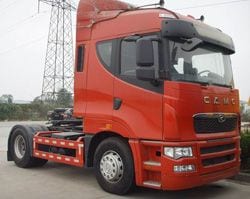
Is blockchain the new internet?
The giants have long been interested in this technology. Toyota, for example, intends to use the blockchain in solutions related to the network of autonomous vehicles. Even our National Securities Depository wants to launch a prototype service on the blockchain by the end of the year. In the IT world, everything is already well known. It's time to introduce her to others.
The English word means "blockchain". This was the name of the cryptocurrency transaction book. This is nothing more than a register of financial transactions. So what's so alluring about it, what do big corporations and the financial world think about it? Answer: safety.
It stores all transactions that have been carried out since the beginning of the system. Thus, blocks in this chain contain transactions performed by users in the cryptocurrency network. The key to security and remarkable resistance to hacking lies in the fact that each of the blocks is contained within it. checksum of the previous block. Entries in this registry cannot be changed. If only because the content is stored in copies by all cryptocurrency users who have client software installed on their computers.
it is opened only for new transactions, so the operation once performed is stored in it forever, with little or no possibility of making changes later. An attempt to change one block will change the entire subsequent chain. If someone tries to cheat, correct something, or enter an unauthorized transaction, the nodes, during the verification and reconciliation process, will find that there is a transaction in one of the copies of the ledger that is incompatible with the network and they refuse to write in a chain. The technology is based on a network, without central computers, control and verification systems. Any computer on the network can participate in the transmission and authentication of transactions.
Can be stored in data blocks on the network various types of transactionsand not just those held in. The system can be used, for example, for commercial operations, notarized, stock trading, environmental protection power generation or buying or selling currency traditional. Work is underway to use the blockchain as a ledger in banking, Document Authentication and Electronic Digital Signature System in public administration. All these transactions can take place outside the systems known for years - without the participation of state trust institutions (for example, notaries), directly between the parties to the transaction.
It is estimated that breaking network ciphers based on advanced mathematical methods and cryptographic protection will require computing power equal to half of all the resources of the Internet. However, some believe that the future introduction of quantum computers will require the introduction of new cryptographic protections.
Chain of secure transactions
The flow of companies and ideas
For about three years, the IT world has seen a real boom in IT companies developing security-based crypto-currency technologies. At the same time, we are witnessing the birth of a new industry, named (from the combination of finance and technology), and in the insurance industry - (). In 2015, a consortium of banks and companies was created for development. Its membership includes the largest of them, including Citibank, Bank of America, Morgan Stanley, Société Générale, Deutsche Bank, HSBC, Barclays, Credit Suisse, Goldman Sachs, JP Morgan and ING. Last July, Citibank even announced that it had developed its own cryptocurrency called Citicoin.
Technology is captivating not only the financial sector. The solution is ideal for settlement of energy purchase and sale transactions between small producers in the micro cogeneration model, for example, between households producing electricity and their consumers, also dispersed, such as electric vehicles.
Potential applications for blockchain solutions include payment Oraz loan between people on specialized sites, excluding intermediaries, for example, in Abra, BTC Jam. Another area Internet of things – for example, to track status, history or event sharing. The solution can also be useful for actions voting systems, perhaps even in elections and referendums in the future - provides a distributed automatic vote count with a complete history.
W transport can help in the development of modern systems for renting, sharing trips and transporting people and goods. They could also be dispersed and completely safe thanks to that. people identification systems, digital signatures and authorizations. Another possibility data store in trusted systems, distributed, resistant to failures and attempts to influence the integrity of data.
Logo of the United Nations program and blockchain network
Australian analysis and UN assistance
There are countries and organizations that show great interest in technology. network platform of the future. The Australian government agency Commonwealth Scientific and Industrial Research Organization published two reports on this topic in June 2017. Their authors analyze the risks and opportunities for use in Australia.
The first study presents four possible scenarios for the development of distributed digital ledger technology in Australia until 2030. These options are both optimistic – assuming transformations of the financial and economic system, and pessimistic - a premonition of the collapse of the project. The second report, Risks and Benefits for Custom Systems and Contracts, explores three use cases for the technology: as an agricultural supply chain, government reporting, and electronic transfers and remittances.
A few weeks earlier, news appeared in the media that Australia would recognize a full-fledged currency from July 1, as Japan had done since early April.
The United Nations, through the World Food Program (WFP), is looking for new ways to fight hunger and poverty, especially in developing countries. One of them must be. In March, the UN released a report saying the program had been being tested in Pakistan since January. They ended successfully, so in May the UN began distributing humanitarian aid to Jordan in the Middle East. It is estimated that up to 10 people may receive assistance in the first phase. needy, and in the future it is planned to expand the coverage of the program to 100 thousand people.
Use will make it better manage food i financial resourcesand also to separate them without any irregularities. Moreover, beneficiaries will not need a smartphone or even paper wallets, which they may simply not have due to poverty. Individuals will be identified using retinal scanning equipment provided by London-based IrisGuard.
WFP wants to use this technology in all regions. Ultimately, this method of disbursement will be expanded to more than eighty WFP program countries. it becomes a way to provide the poorest neighborhoods with livelihoods such as money or food. It is also a way to expedite assistance in hard-to-reach areas.
It looks like it can revolutionize almost every area of life and technology. There are also opinions that this is a platform that will allow us to build a completely new Internet, safe, private and focused on the interests of users. Rather, according to other estimates, the technology may be just a kind of new Linux - an alternative, but not a "mainstream" networking platform.
Photo:
- Toyota in a secure network
- Chain of secure transactions
- UN program and network logo

